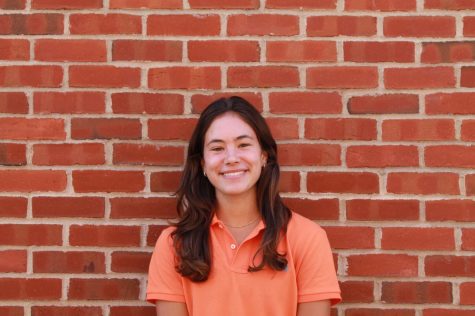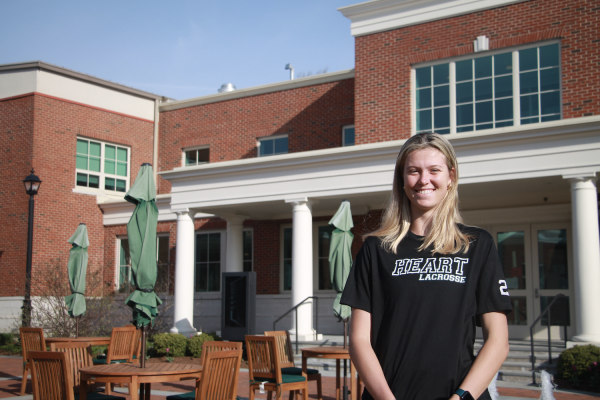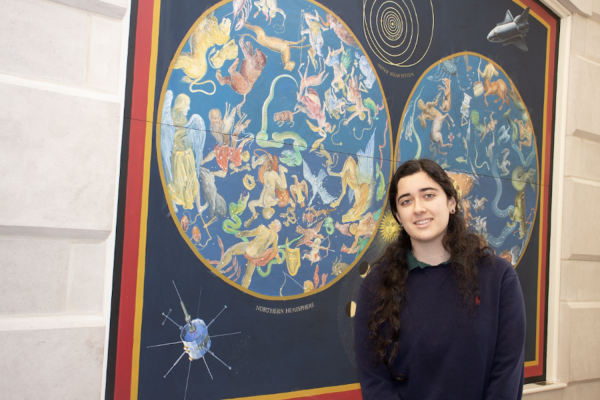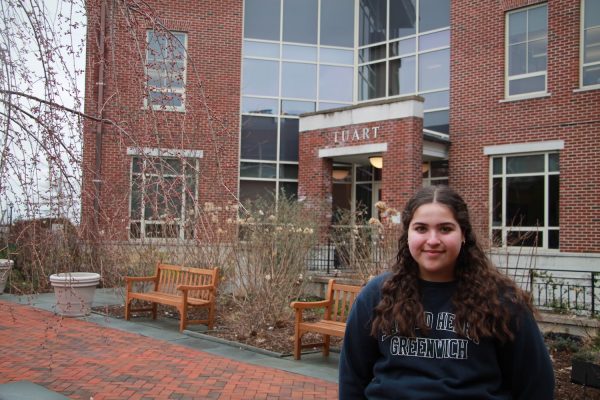Celebrating the new year across the globe
Sacred Heart students around the world welcome 2022 with various traditions.
As 2022 commences, people around the world celebrate the new year, making resolutions and hoping for good fortune in the coming 12 months. Sinclair Noonan, Cristina Ensenyat, Leonor Pérez de Ayala, and Annie Cornell, juniors within the Sacred Heart Network, shared their respective traditions to welcome the new year. Living in the United States and Spain, sequentially, all four students participate in different celebrations.
Sinclair is a student at Sacred Heart Greenwich. She enjoys watching the ball drop every year in Times Square, New York City, on television. Sinclair believes this tradition establishes a sense of excitement for the new year to come.

“My favorite New Years’ tradition is watching the ball drop on TV with my family,” Sinclair said. “The excitement everyone has leading up to the ball dropping begins the year with an eager and enthusiastic tone. Not every year, but most years, we do fireworks in the driveway, which also instill excitement for the new year.”
A native of Barcelona, Spain, Cristina attends Sagrat Cor de Sarriá. She loves celebrating the new year with her family and friends.
“When it comes to traditions, in general, they are all so essential to me. However, the New Years’ Eve tradition is more than that due to the fact that it is a way to celebrate with friends and family that a new year is coming,” Cristina said. “I love the way family and friends get together and celebrate it since most traditions [in Spain] usually are celebrated with family only.”
Following a popular Spanish practice, Cristina and her family watch the countdown to the new year on television and participate in the “las doce uvas de la suerte” tradition, eating 12 grapes at midnight on New Year’s Eve. People from Spain believe that eating 12 grapes at midnight will guarantee them a lucky year, according to atlasobscura.com. Cristina likes this tradition because it starts the new year with high spirits.
“The tradition starts the year with humor since it is extremely funny to eat 12 grapes in 12 seconds, and it is hilarious to see people’s reactions when eating them,” Cristina said. “So it is a nice and friendly way to start the new year.”
Annie attends Sacred Heart Greenwich. She spent New Year with her exchange student, Leonor, a student of Colegio Santa María del Valle in Sevilla, Spain. Annie explained the similarities between the celebrations in Spain and the United States.
“In terms of similarities, both cultures highlight the importance of loved ones,” Annie said. “I typically spend New Year’s Eve with my family, friends, and loved ones, as I believe, many Americans do. Similarly, Leonor and her family hosted her cousins this past New Year’s Eve. Additionally, I typically spend New Year’s Day with my family friends, and Leonor and I spent much time with her family by going to a family lunch hosted by her aunt.”

Annie also explained the cultural differences between the two countries. The different cultures are each surrounded by their family and friends, but their celebrations differ, as many people in the United States watch the ball drop and many people in Spain participate in the 12 grapes tradition.
“In terms of differences, they are mainly to do with cultural practices,” Annie said. “In the United States, typically, Americans watch the ball drop from Times Square every year. In Spain, they have a similar countdown, but rather than having a ball drop, it is tradition to eat 12 grapes for each clock chime, counting down to midnight. In that sense, the two cultures differ, though the motive remains the same.”
Featured Image by Caterina Pye ’23

After two years of writing and editing for the King Street Chronicle, Caterina is extremely excited to return for her final year as the Managing Editor,...











